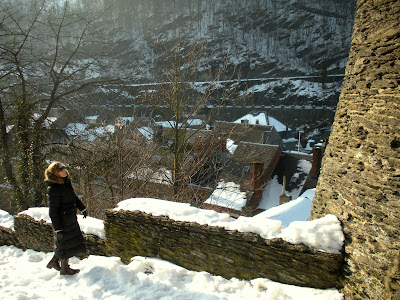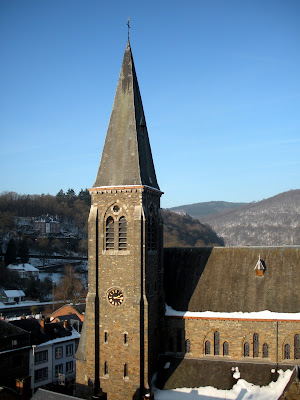Luxembourg in general, is a spot in which many American tourists have yet to discover. This doesn't mean that there isn't an influx of starry-eyed travelers driving, biking and hiking their way through the many, and vastly varied, landscapes this country has to offer. Yet for me, a leisurely American tourist, as we drove our way through Luxembourg's tapestry of scenic fields to its craggy, forested mountain switchbacks, I felt as though I had discovered a secret.
As we made our way through the brick and stone towns in the Belgium Ardennes to the country of Luxembourg, the scenery changed noticeably. Almost instantly, the windy country roads gave way to petite villages, with pastel-stuccoed villas typical of Tuscany, that lined the roads in clusters of a mere dozen or so houses. Yet unlike Tuscany, it seems there is no restriction on pallet. Here, the residences of Luxembourg color outside the lines, painting their homes beyond the pale oranges, yellows and pinks of Italy, with enchanting blues and rustic reds, and even olives.
Vianden, our first stop, is a prime example of the cleanliness, friendliness and charming beauty Luxembourg has to offer- all wrapped into an encasing beneath its glowing turreted castle. Fog seems to wrap itself around the town that sits comfortably down by a bold river, but the streets and aesthetics, as in all of this country, are impeccably clean. Like Italy, the old-world villages (not the least of which is Vianden) are decorated with flowering window boxes, potted plants, and manicured vines.
Luxembourg is pristine, as evidence not only from its freshly painted villas and spotless streets, but also from the many lichens and moss (a well known sign of good air quality) that layer the trees, boulders and many ruins. Whether driving through the almost untouched forests or walking over the polished cobbles of Vianden's streets, Luxembourg is decidedly refreshing.
Beyond the many hiking, biking, canoeing, and climbing excursions that are a major draw for the many Dutch and German tourists, Vianden, Luxembourg, offers a delish retreat for the French, who are used to people watching from outdoor cafe terraces, or shopping. Either way (and including for this American), you are sure to be understood. The people of Luxembourg are friendly, accommodating and intelligent, and they easily met these visitors on our terms
I am calling Luxembourg the new 'It' retreat. With castles ('chateaus')and ruins like Scotland, scenic views like Switzerland, pastry shops like France, and villas like Italy, you cannot go wrong.























































